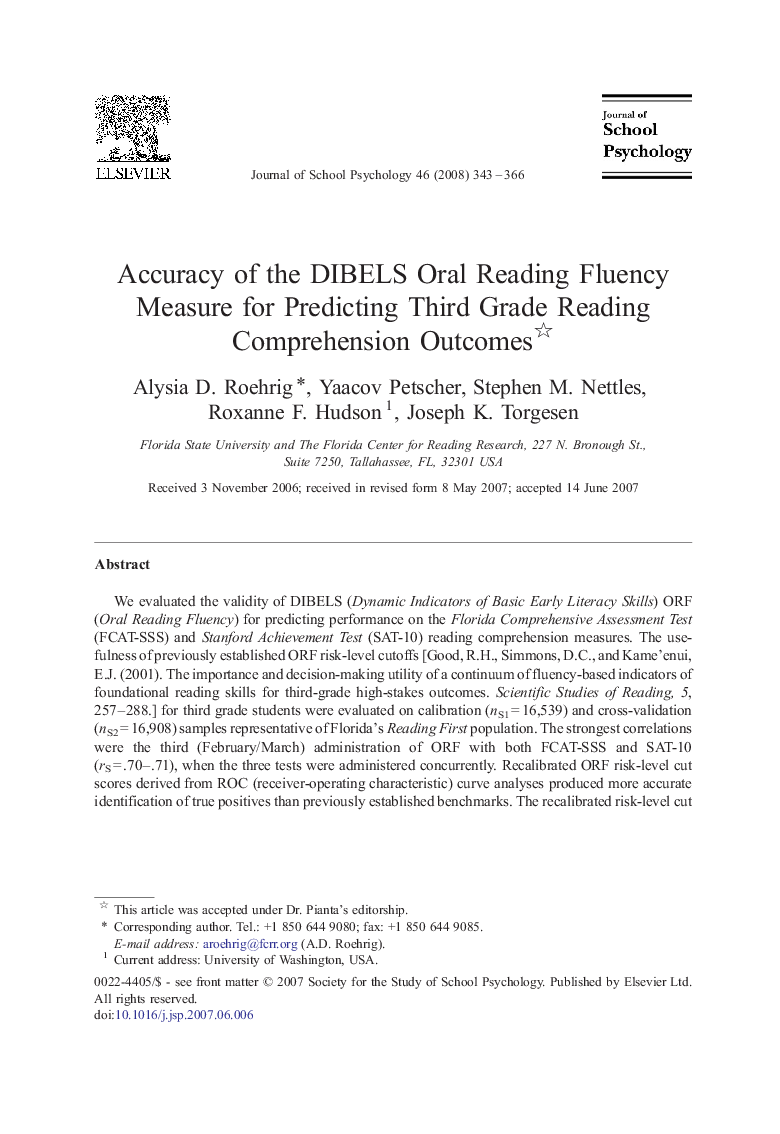| Article ID | Journal | Published Year | Pages | File Type |
|---|---|---|---|---|
| 363874 | Journal of School Psychology | 2008 | 24 Pages |
We evaluated the validity of DIBELS (Dynamic Indicators of Basic Early Literacy Skills) ORF (Oral Reading Fluency) for predicting performance on the Florida Comprehensive Assessment Test (FCAT-SSS) and Stanford Achievement Test (SAT-10) reading comprehension measures. The usefulness of previously established ORF risk-level cutoffs [Good, R.H., Simmons, D.C., and Kame’enui, E.J. (2001). The importance and decision-making utility of a continuum of fluency-based indicators of foundational reading skills for third-grade high-stakes outcomes. Scientific Studies of Reading, 5, 257–288.] for third grade students were evaluated on calibration (nS1 = 16,539) and cross-validation (nS2 = 16,908) samples representative of Florida's Reading First population. The strongest correlations were the third (February/March) administration of ORF with both FCAT-SSS and SAT-10 (rS = .70–.71), when the three tests were administered concurrently. Recalibrated ORF risk-level cut scores derived from ROC (receiver-operating characteristic) curve analyses produced more accurate identification of true positives than previously established benchmarks. The recalibrated risk-level cut scores predict performance on the FCAT-SSS equally well for students from different socio-economic, language, and race/ethnicity categories.
